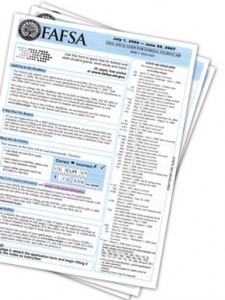
As spring peeks just around the corner, so does the slew of high school seniors making final selections for college enrollment. Whether it’s Harvard or the local community college, each choice comes with an equal amount of decisions for their parents regarding how to pay for their child’s post-secondary education.
Effective July 1, 2010, new student loan legislation enacted as part of the Health Care Bill eliminated the Federal Family Education Loan Program, which gave private-sector institutions permission to offer federal student loans. Now, students seeking loans must apply through the Federal Direct Loan Servicing Program. That puts the federal government squarely in charge of a majority of student loans. What that means to parents who are desperately searching for college loan dollars, is that money is harder to obtain and interest rates will be climbing.
Why the change?
Money, of course. The federal government estimates that it will save between $6 billion and $7 billion annually in payments to private banks in the form of subsidies used to encourage private lending. The savings, say proponents, will be funneled back into Pell Grants, which was slated to run out of money this year, and to pay down the deficit.
Pell Grants are scholarships offered primarily to some 8 million low income students. The new funding will allow Pell Grants to continue and even increase from $5,550 this year to $5,975 by 2017.
Included in the bill are provisions for loan repayment. Starting in July 2014, borrowers will be allowed to cap payments at 10% above their basic living allowance, instead of the current 15%. Also, if payments are consistent and on time, balances will be forgiven after 20 years instead of 25 or after 10 years if the borrower is in a public service profession such as teaching, nursing or in the military.
Tips for student loans:
1. Start with federal loans first. Uncle Sam has backed student loans with the explicit intention of helping struggling students find a way to pay for college. The interest rates are lower and the loan itself is backed by the federal government removing the middle man banks and their charges.
There are three types of Federal loan programs:
- Stafford – for students with and without financial need
- PLUS – for parents and graduate and professional students
- Perkins – only for students demonstrating financial need
2. Private loans. These loans will still be available from small banking institutions but will come with higher interest rates and more stringent repayment plans.
3. Try local credit unions. Loan programs via the Credit Union Student Choice Program can be a good option. Average rates on existing loans are 6.25% with no origination fees.
Bear in mind that while backed by the federal government that these are still LOANS and not GRANTS. Student loans must be repaid the same as any other car loan, credit card, or mortgage payment. Student loans are also not included in most bankruptcy proceedings which means that they are debts that will not be forgiven or wiped away in a financial restructuring. If you opt for private student loan funding, be aware that the interest rates will be considerably higher than the federally backed program and that again, there is no consumer protection under current bankruptcy laws.
My best advice is to assume student loan debt only if your child’s future career will allow them to safely repay the amount being borrowed. If you and your child amass $100,000 in student loans, you had better be anticipating a future career that will pay substantially more than the minimum repayment amount in a given year. For professions such as doctors, lawyers and even veterinarians, remember that those professions don’t earn what they used to and a graduated repayment plan will follow your child for decades after the schooling is completed.
